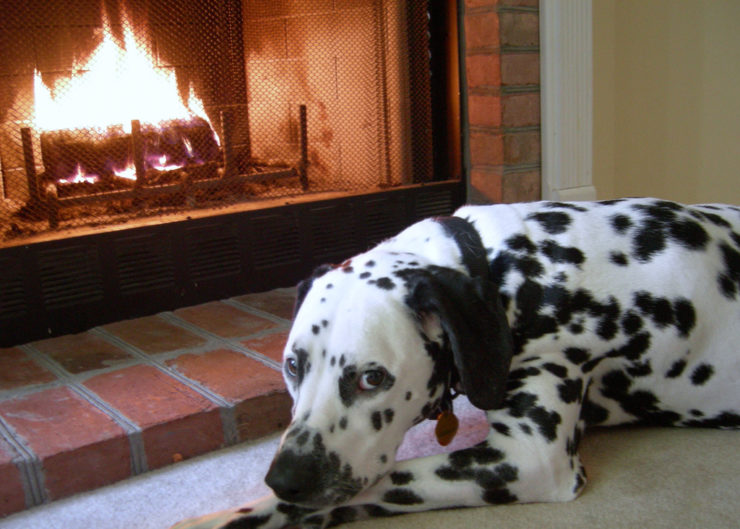Dogs, like humans, are born followers, and they can become stressed or anxious when left alone and in charge of the situation. This usually results in inappropriate elimination or destructive behavior.
Another cause for Canine Separation Anxiety (CSA) is hyper attachment. Your puppy or your dog has not been allowed to become confident on his own and uses his owner as a source of confidence.
Dog separation anxiety is treatable. It can be managed, and sometimes overcome, using the right knowledge and some old-fashioned hard work.
![]()

Photo Credit: Chris Vaughan/Flickr CC
Signs a puppy or a dog in your care may be suffering from canine separation anxiety may include:
Here are some simple things that we can do in order to lower the level of separation anxiety in dogs and puppies when left home alone.
Provide a puppy or a dog with a soft item that smells like an attachment object like a favorite blanket, chew toy, or dog bed. Wear a t-shirt the day before or to bed overnight. Offer this t-shirt to the dog. Use a different shirt every night so the shirt will always have your scent on it.
By playing a radio tuned into soothing music during the day also helps drown out any exterior noises that may sensitize your pet to becoming anxious. The noxious sounds could be barking dogs or machinery around the house.
It is always advisable to reduce the presence and absence of contrast. For five minutes after you arrive at home, and 10 minutes before you leave, completely ignore an anxious puppy or a dog. This means no eye contact, no speaking, no touching, and no fast noisy activity. The goal is to reduce the contrast between your presence and absence. If there is damage or inappropriate elimination or defecation, ignore it! Remember we do not want such a dog to associate an exciting stimulus with your arrival. Clean it up later.
Because dogs are ritualistic it’s important to provide them with a consistent routine. Dogs and puppies can become anxious with a change of routine or scenery, especially dogs that are overly sensitive. This includes voiding times, playtimes, and training times. Consistency and structure are the keys to the stability of a dog’s life and help to reduce dog separation anxiety.
We want to encourage and challenge our dogs on a daily basis, by participating in a focused activities like obedience training and regular leash walks. This gives you the opportunity to provide confidence-building, exercise, and leadership. This helps dogs and puppies to release negative energy, and it provides them with a balanced lifestyle.
Exercise and obedience training is essential prior to undergoing independence exercises, or setting up a desensitization program.
Dr. Jeff Grognet is a veterinarian, and Mike Annan is a canine obedience instructor and behaviorist. Together they have created the ACE Academy for Canine Educators. They have produced a free course for shelter and rescue (though anyone can benefit from it) as well as a weekly newsletter that educates on canine (and feline) health, obedience, and behavior issues. Visit their website for a program to desensitize and counter condition the dog.
This article is guest-written by Dr. Jeff Grognet specially for the Russian Dog website.
We use cookies to offer you a better browsing experience, analyze site traffic, personalize content and ads.